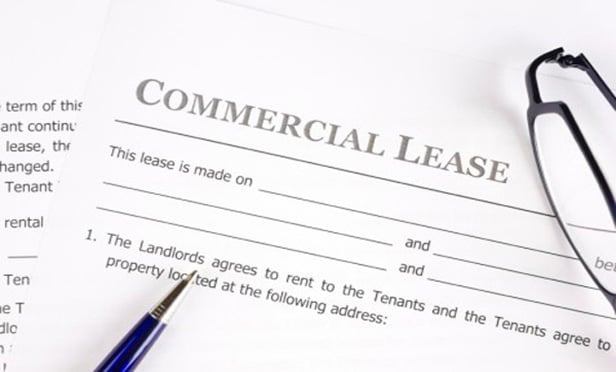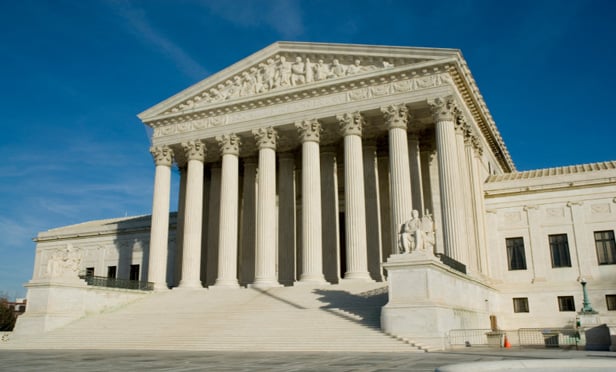Features

Industry Workplace Misconduct Investigations
The important ongoing industry and national conversation about sexual harassment is serving as a wake-up call to entertainment companies, board members and C-suite executives about the need to be proactive when confronted with allegations of harassment or other workplace misconduct.
Features

Walking the Fine Line of Fair Use: The Second Circuit's Decision in <i>Fox News v. TVEyes</i>
Only a small fraction of television news broadcasts are made available online. For a party to monitor and view all news coverage of an event, it would essentially have to watch and record all news broadcasts 24/7. That's exactly what media-monitoring service TVEyes did. There was no dispute that TVEyes had copied Fox News's content. Instead, the issue was whether TVEyes's service constituted fair use.
Features

As It Turns Out, <i>Yellowstone</i> Waivers Are Enforceable
Four years ago, we explored whether a commercial tenant could waive its common law right to seek a <i>Yellowstone</i> Injunction. At that time, there was no appellate authority directly on point. This all changed on Jan. 31, 2018, when the Appellate Division, Second Department ruled in <i>159 MP Corp., v Redbridge Bedford, LLC</i> that the “commercial tenants' voluntary and limited waiver of declaratory judgment remedies in their written lease is valid and enforceable, and not violative of New York's public policy …”
Features

The Ripple Effect of Rejecting Trademark Licenses
<b><i>The First Circuit Widens the Controversy</b></i><p>In <i>In re Tempnology</i>, the First Circuit held that the debtor's rejection of a trademark license strips the nondebtor licensee of any right to continue to use the trademarks. In so doing, the court takes the same approach as the Fourth Circuit and rejects the approaches advocated by the Third and Seventh Circuits.
Columns & Departments

Real Property Law
No Tacking of Adverse Possession Claims<br>Issues of Fact Preclude Injunction Requiring Removal of Encroachments<br>Statute of Limitations Bars Foreclosure Claim<br>Permission Bars Prescriptive Easement Claim
Features

Meet the Lawyer Working on Inclusion Rider Language
At the Oscars in March, Best Actress winner Frances McDormand made “inclusion rider” go viral. But Kalpana Kotagal, a partner at Cohen Milstein Sellers & Toll had already worked for months to write the language for such provisions. Kotagal was developing legal language for contract provisions that Hollywood's elite could use to require studios and other partners to employ diverse workers on set.
Features

<i>Simon v. Starbucks</i>: Preliminary Injunction Granted to Prevent Store Closings
While the court will not have the opportunity to rule on the merits of the case, the facts relied upon by the Indiana Superior Court and the conclusions reached in rendering its decision are still instructive for practitioners drafting continuous-use provisions and advising clients on potential breaches or anticipatory breaches of such provisions.
Features

SCOTUS: No Safe Harbor Protection Where Financial Institutions are Mere Intermediaries
The Supreme Court's decision and analysis are instructive for both bankruptcy and corporate practitioners, and will likely yield significant returns for estate beneficiaries.
Features

Regulating Interior Landmarks: New York Court Says Duties Don't End
What powers does the New York City Landmarks Preservation Commission have to require a building owner to maintain a mechanical clock located in the interior of a building? In <i>Save America's Clocks, Inc. v. City of New York</i>, New York's Appellate Division, First Department, held that the Commission had power to require maintenance of the clock, and to require public access to it.
Columns & Departments

Counsel Concerns: Ambiguous Offer for Daddy Yankee to Settle Suit Ends in Attorney Fees Denial
Attorneys who sued “Despacito” artist Daddy Yankee for defamation should have heeded the song's title and drafted their settlement offer slowly, a federal appellate court ruled.
Need Help?
- Prefer an IP authenticated environment? Request a transition or call 800-756-8993.
- Need other assistance? email Customer Service or call 1-877-256-2472.
MOST POPULAR STORIES
- The 'Sophisticated Insured' DefenseA majority of courts consider the <i>contra proferentem</i> doctrine to be a pillar of insurance law. The doctrine requires ambiguous terms in an insurance policy to be construed against the insurer and in favor of coverage for the insured. A prominent rationale behind the doctrine is that insurance policies are usually standard-form contracts drafted entirely by insurers.Read More ›
- A Lawyer's System for Active ReadingActive reading comprises many daily tasks lawyers engage in, including highlighting, annotating, note taking, comparing and searching texts. It demands more than flipping or turning pages.Read More ›
- The Brave New World of Cybersecurity Due Diligence in Mergers and Acquisitions: Pitfalls and OpportunitiesLike poorly-behaved school children, new technologies and intellectual property (IP) are increasingly disrupting the M&A establishment. Cybersecurity has become the latest disruptive newcomer to the M&A party.Read More ›
- Abandoned and Unused Cables: A Hidden Liability Under the 2002 National Electric CodeIn an effort to minimize the release of toxic gasses from cables in the event of fire, the 2002 version of the National Electric Code ("NEC"), promulgated by the National Fire Protection Association, sets forth new guidelines requiring that abandoned cables must be removed from buildings unless they are located in metal raceways or tagged "For Future Use." While the NEC is not, in itself, binding law, most jurisdictions in the United States adopt the NEC by reference in their state or local building and fire codes. Thus, noncompliance with the recent NEC guidelines will likely mean that a building is in violation of a building or fire code. If so, the building owner may also be in breach of agreements with tenants and lenders and may be jeopardizing its fire insurance coverage. Even in jurisdictions where the 2002 NEC has not been adopted, it may be argued that the guidelines represent the standard of reasonable care and could result in tort liability for the landlord if toxic gasses from abandoned cables are emitted in a fire. With these potential liabilities in mind, this article discusses: 1) how to address the abandoned wires and cables currently located within the risers, ceilings and other areas of properties, and 2) additional considerations in the placement and removal of telecommunications cables going forward.Read More ›
- Guidance on Distributions As 'Disbursements' and U.S. Trustee FeesIn a recent case from the Bankruptcy Court for the District of Delaware, In re Paragon Offshore PLC, the bankruptcy court provided guidance on whether a post-plan effective date litigation trust's distributions constituted disbursements subject to the U.S. Trustee fee "tax."Read More ›
